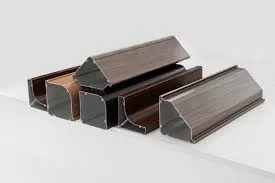door sliding roller
The Essential Guide to Door Sliding Rollers
Door sliding rollers are an often overlooked yet crucial component in the functionality of sliding doors. Whether for patios, closets, or commercial spaces, understanding sliding rollers can significantly enhance your door's efficiency and lifespan. This article delves into the nature of door sliding rollers, their types, functionality, and maintenance tips to ensure smooth operation.
What Are Door Sliding Rollers?
Door sliding rollers are small yet vital mechanical components attached to the top or bottom of sliding doors. They allow the door to glide seamlessly along the track, making it easy to open and close without the need for excessive force. Typically made from durable materials like nylon, steel, or PVC, these rollers provide a stable and smooth operation, reducing wear on both the door and its frame.
Types of Sliding Rollers
There are several types of sliding rollers, each designed for specific applications and door designs
1. Nylon Rollers Common in residential settings, nylon rollers are lightweight and create minimal friction, allowing for quiet operation. Their design mitigates wear on the door track, contributing to a longer lifespan.
2. Steel Rollers More robust than nylon, steel rollers are often used in commercial applications or heavy-duty sliding doors. They can bear more weight and handle high-frequency usage without compromising performance.
3. Adjustable Rollers These rollers come with a mechanism that allows for height adjustment, making it easier to ensure that the door hangs evenly and slides smoothly. This feature is particularly beneficial if the door or track settles over time.
4. Ball-Bearing Rollers Incorporating ball bearings within the roller, these components reduce friction further, leading to an even smoother operation. They are ideal for high-end sliding door applications where performance is paramount.
Functionality
door sliding roller

The primary function of door sliding rollers is to facilitate the smooth movement of sliding doors. They operate in conjunction with a track system, allowing the door to move effortlessly along a horizontal path. Proper alignment is crucial; if the rollers are misaligned or damaged, the door might stick, making it difficult to operate.
When functioning optimally, sliding rollers can support a significant weight, allowing for the use of large panels of glass or heavy wooden doors. The ability to slide rather than swing open allows for efficient use of space — a characteristic that makes sliding doors an excellent choice for both homes and businesses.
Maintenance Tips
To maintain the efficiency and longevity of your door sliding rollers, consider these simple maintenance tips
1. Regular Cleaning Dust, dirt, and debris can accumulate in the track and on the rollers, leading to friction and wear. Regularly clean the track with a damp cloth and remove any obstructions for optimal performance.
2. Lubrication Periodically apply a silicone-based spray lubricant to the rollers and track. This treatment reduces friction and prevents rust, especially if your rollers are made from steel.
3. Inspection Regularly inspect the rollers for any signs of wear or damage. Look for cracks or chips in the rollers and check for misalignment. Early detection of issues can prevent significant problems later.
4. Replacement If your rollers are worn beyond repair, replacing them promptly is crucial. Check various retailers or online stores to find the correct replacement parts that match your door specifications.
Conclusion
Door sliding rollers play a pivotal role in the functionality of sliding doors, providing convenience and efficiency. By understanding their types, functionality, and maintenance tips, homeowners and businesses can ensure that their sliding doors operate smoothly for years to come. Investing a little time and effort in maintaining these components can lead to significant improvements in performance and durability, making your spaces more accessible and enjoyable.
-
Wrought Iron Components: Timeless Elegance and Structural StrengthNewsJul.28,2025
-
Window Hardware Essentials: Rollers, Handles, and Locking SolutionsNewsJul.28,2025
-
Small Agricultural Processing Machines: Corn Threshers, Cassava Chippers, Grain Peelers & Chaff CuttersNewsJul.28,2025
-
Sliding Rollers: Smooth, Silent, and Built to LastNewsJul.28,2025
-
Cast Iron Stoves: Timeless Heating with Modern EfficiencyNewsJul.28,2025
-
Cast Iron Pipe and Fitting: Durable, Fire-Resistant Solutions for Plumbing and DrainageNewsJul.28,2025
-
 Wrought Iron Components: Timeless Elegance and Structural StrengthJul-28-2025Wrought Iron Components: Timeless Elegance and Structural Strength
Wrought Iron Components: Timeless Elegance and Structural StrengthJul-28-2025Wrought Iron Components: Timeless Elegance and Structural Strength -
 Window Hardware Essentials: Rollers, Handles, and Locking SolutionsJul-28-2025Window Hardware Essentials: Rollers, Handles, and Locking Solutions
Window Hardware Essentials: Rollers, Handles, and Locking SolutionsJul-28-2025Window Hardware Essentials: Rollers, Handles, and Locking Solutions -
 Small Agricultural Processing Machines: Corn Threshers, Cassava Chippers, Grain Peelers & Chaff CuttersJul-28-2025Small Agricultural Processing Machines: Corn Threshers, Cassava Chippers, Grain Peelers & Chaff Cutters
Small Agricultural Processing Machines: Corn Threshers, Cassava Chippers, Grain Peelers & Chaff CuttersJul-28-2025Small Agricultural Processing Machines: Corn Threshers, Cassava Chippers, Grain Peelers & Chaff Cutters












